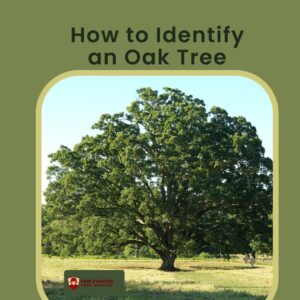Oak trees are among the world’s most majestic and resilient trees, providing shelter and food for wildlife while adding beauty and value to landscapes. The trees can live up to a thousand years. It is common said that an oak tree takes 300 years to grow, 300 years to live, and 300 years to die. With over 600 species of oak trees globally, 100 of which grow in the U.S., it is essential to learn how to identify oak trees.
Whether you want to know how to identify an oak tree or considering planting one, you are in the right place. This oak tree identification guide will walk you through the key characteristics of oak trees, the differences between major species, and best care practices to ensure they thrive for generations.
How to Identify an Oak Tree
Oak trees have distinctive features that set them apart from other hardwood trees. Identifying an oak tree involves examining its leaves, bark, acorns, and overall shape. Below, we break down the most reliable characteristics to look for.
1. Oak Tree Leaves: The Best Place to Start

Image: Close-up of different oak tree leaves
Leaves are often the easiest way to identify an oak tree. Despite having hundreds of oak tree types worldwide, mastering oak tree leaf identification helps you differentiate oak tree species. Fortunately, the trees fall into two categories: white oaks and red oaks.
Here are the specific characteristics of leaves from each of these categories:
- White oak leaves features: Simple, soft, alternate and bristleless with a finger-like appearance. Further, white oak leaves are often 5-9 inches long and 2-4 inches wide. Each leaf has about 6-10 lobes rounded at the tips.
- Red Oak leaves features: Trees from this family have leaves that grow up to 5-10 inches long. They have slender, pointed lobes and bristly tips that make it easy for one to distinguish Red oaks from White Oak trees.
Additional leaf characteristics:
- Color: White oak leaves are lustrous, bright green or blue-green on top and a pale, whitish-gray, non-hairy underside. Conversely, the red oak leaves have a dull-dark green top side while their underside is grayish-white in color.
- Seasonal Changes: In autumn and fall, white oak leaves gain a claret red or burgundy hue, while red oaks turn rusty-brown or, occasionally, red.
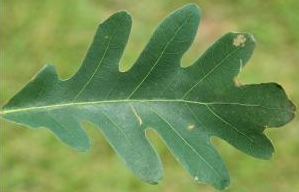
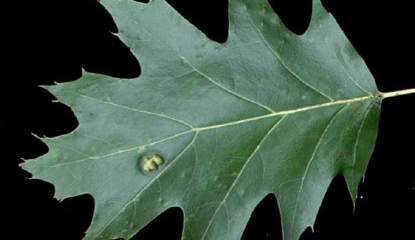
Images: White oak leaf and red oak leaf
2. Oak Tree Bark: Rough, Ridged, and Durable
The bark is another strong oak trees identification method. Here’s how to tell the difference between the white and red oak trees through oak bark identification:
- Deep ridges and furrows: Barks from both tree types have ridges and furrows. However, the white oak has a thick, rugged bark with deeper, tougher, flakey ridges. On the other hand, red oak barks display shallower furrows and longer, unbroken ridge patterns.
- A hard, scaly texture: This is the most common characteristic of oak trees. Nevertheless, white oaks are rougher and more scaly, while red oak trees exhibit smooth bark with vertical lines.
- Colors ranging from grayish-brown to dark brown: The white oak’s bark is often whitish-light grey. As for red oaks, their bark’s hue is brownish-gray when mature.

Image: Close-up of mature oak tree bark with deep ridges
Oak wood is incredibly durable and has been used for centuries in construction, shipbuilding, and wine barrels due to its strength and resistance to decay.
3. Oak Tree Acorns: The Tree’s Signature Seed
Acorns are the fruit of oak trees, and their appearance can help in oak tree identification:
- White Oak Acorns: They are medium-large in size with a length of about 11/4 inches. Additionally, the acorns display a Light brown color and have a short, knobby cap.
- Red Oak Acorns: This tree has darker brown acorns with a longer, scaly cap resembling a beret-bottle cap.
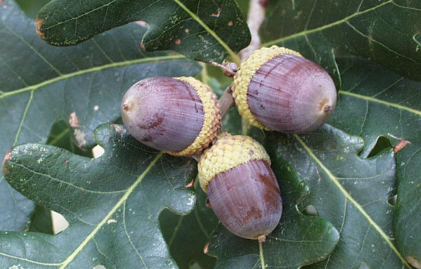
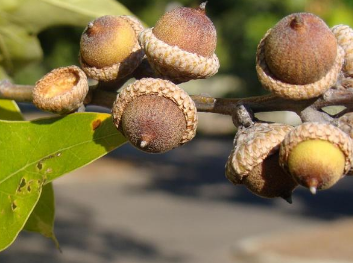
Image: White oak and red oak acorns side by side
Acorns are a crucial food for wildlife, including squirrels, mice, chipmunks, deer, and birds. In addition, these fruits provide numerous health benefits for humans.
Types of Oak Trees
There are two primary categories of oak trees in North America: white oaks and red oaks.
White Oak Trees (Quercus alba)
- Leaf Shape: ovate shape with rounded lobes
- Bark: Whitish or light gray with deep, irregularly-patterned ridges
- Acorn: Oval-shaped and Light brown, with a knobby cap
- Common Varieties: Bur oak, shumard oak, swamp white oak, post oak, chinkapin oak

Image: Full-grown white oak tree in a field
Red Oak Trees (Quercus rubra)
- Leaf Shape: Pointed lobes with small bristle tips
- Bark: Darker, with brownish ridges
- Acorn: Round and dark brown with a relatively longer, scaly cap
- Common Varieties: Pin oak, scarlet oak, willow oak, black oak, northern red oak

Image: Full-grown red oak tree with its characteristic pointed leaves
Where and How to Plant an Oak Tree
Best Planting Conditions:
- Soil Type: Rich, well-drained, slightly acidic to neutral soil
- Sunlight: Full sun (at least 6 hours per day)
- Spacing: 40-100 feet apart or at least 2 meters apart, depending on the species
Growth Expectations:
- White Oaks: 60-100 feet tall, 50-90 feet wide
- Red Oaks: 60-70 feet tall, 40-60 feet wide
- Live Oaks: 40-60 feet tall, 60-100 feet wide
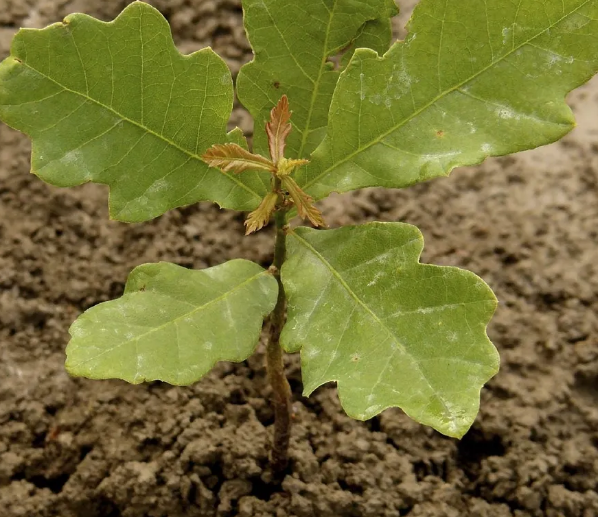
Image: A young oak sapling growing in a backyard
Pruning & Maintenance
- Best Time to Prune: Winter months (outside of the active growing cycle)
- Avoid Pruning from April to November to prevent oak wilt disease
Common Oak Tree Diseases and Threats
Even the strongest trees can suffer from diseases, pests, and environmental stressors. Here are some common threats:
1. Oak Decline
- Symptoms: Crown dieback, starting from the outer limbs to twigs to branches inwards
- Cause: Soil compaction, extreme weather, pests, or root damage
- Solution: Proper pruning, weed control, soil aeration, and disease monitoring
2. Oak Wilt (A Deadly Fungus)
- Symptoms: Wilting leaves, premature leaf drop, and tree decline
- Cause: Fungus (Bretziella fagacearum) blocking water flow in the tree
- Solution: Timely oak tree fungus identification by a certified arborist and pruning

Image: Oak tree with wilted leaves
3. Oakworms (Caterpillars That Feed on Leaves)
- Symptoms: Large groups of caterpillars consuming new spring leaves
- Solution: Early intervention with organic pest control or insecticides
4. Oak Leaf Blisters & Galls
- Symptoms: Rough, raised spots or abnormal growths on leaves
- Cause: Taphrina caerulescens fungus infection or insect infestations
- Solution: Regular monitoring and proper tree care practices
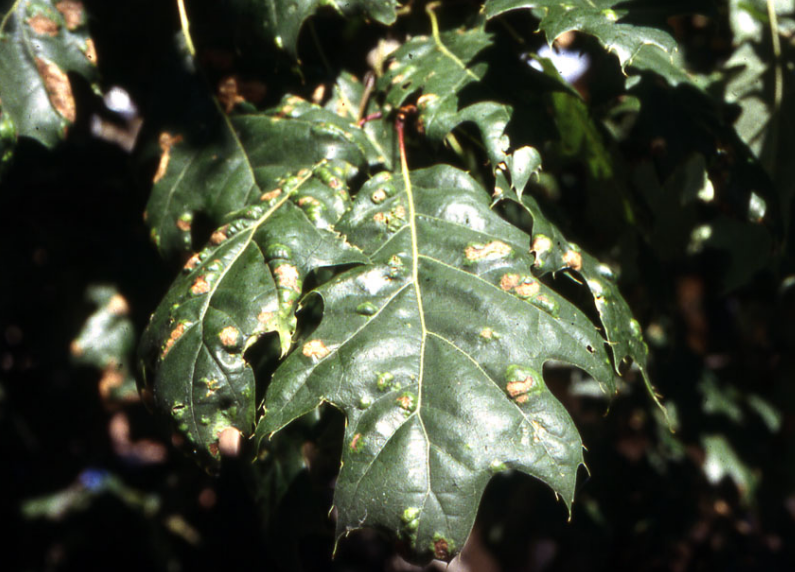
Image: Close-up of oak leaves with galls
Conclusion: Keep Your Oak Trees Thriving
Whether you already have an oak tree on your property or you’re thinking about planting one, understanding oak tree identification and maintenance of these magnificent trees is key to their long-term health.
For quick identification, look at the leaves and bark. It is also essential to choose the right species for your landscape follow best practices for pruning and maintenance. To keep the tree healthy, you should watch out for common diseases and pests.
For expert oak tree care and maintenance, consider working with a certified arborist to ensure your trees remain strong and healthy for future generations.

Image: A mature oak tree standing tall in a lush forest
Need Help Managing Your Oak Trees?
At Fire Fighter Tree Services, we specialize in:
- 🌳 Tree Identification & Health Assessments
- ✂️ Professional Oak Tree Pruning & Trimming
- 🦠 Disease & Pest Control for Oak Trees
Call us today to schedule a consultation with one of our certified arborists.


